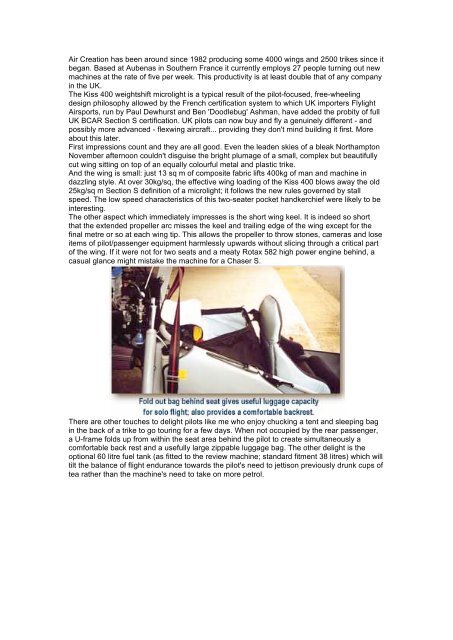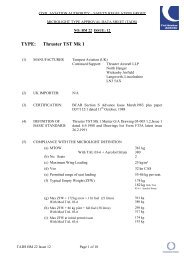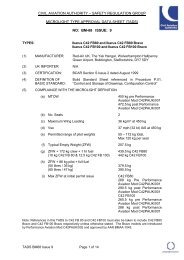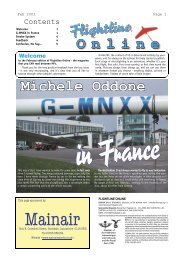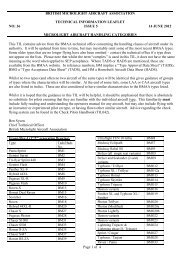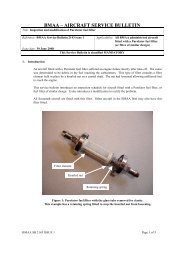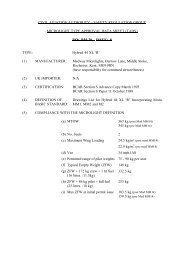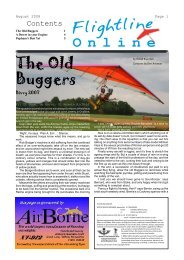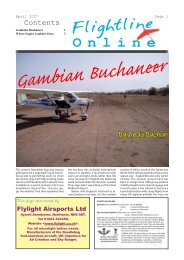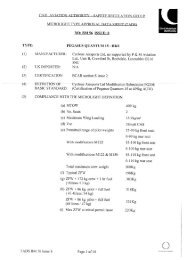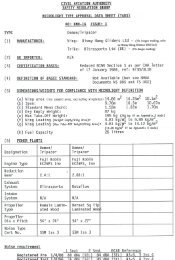French Kiss - British Microlight Aircraft Association
French Kiss - British Microlight Aircraft Association
French Kiss - British Microlight Aircraft Association
Create successful ePaper yourself
Turn your PDF publications into a flip-book with our unique Google optimized e-Paper software.
Air Creation has been around since 1982 producing some 4000 wings and 2500 trikes since it<br />
began. Based at Aubenas in Southern France it currently employs 27 people turning out new<br />
machines at the rate of five per week. This productivity is at least double that of any company<br />
in the UK.<br />
The <strong>Kiss</strong> 400 weightshift microlight is a typical result of the pilot-focused, free-wheeling<br />
design philosophy allowed by the <strong>French</strong> certification system to which UK importers Flylight<br />
Airsports, run by Paul Dewhurst and Ben 'Doodlebug' Ashman, have added the probity of full<br />
UK BCAR Section S certification. UK pilots can now buy and fly a genuinely different - and<br />
possibly more advanced - flexwing aircraft... providing they don't mind building it first. More<br />
about this later.<br />
First impressions count and they are all good. Even the leaden skies of a bleak Northampton<br />
November afternoon couldn't disguise the bright plumage of a small, complex but beautifully<br />
cut wing sitting on top of an equally colourful metal and plastic trike.<br />
And the wing is small: just 13 sq m of composite fabric lifts 400kg of man and machine in<br />
dazzling style. At over 30kg/sq, the effective wing loading of the <strong>Kiss</strong> 400 blows away the old<br />
25kg/sq m Section S definition of a microlight; it follows the new rules governed by stall<br />
speed. The low speed characteristics of this two-seater pocket handkerchief were likely to be<br />
interesting.<br />
The other aspect which immediately impresses is the short wing keel. It is indeed so short<br />
that the extended propeller arc misses the keel and trailing edge of the wing except for the<br />
final metre or so at each wing tip. This allows the propeller to throw stones, cameras and lose<br />
items of pilot/passenger equipment harmlessly upwards without slicing through a critical part<br />
of the wing. If it were not for two seats and a meaty Rotax 582 high power engine behind, a<br />
casual glance might mistake the machine for a Chaser S.<br />
There are other touches to delight pilots like me who enjoy chucking a tent and sleeping bag<br />
in the back of a trike to go touring for a few days. When not occupied by the rear passenger,<br />
a U-frame folds up from within the seat area behind the pilot to create simultaneously a<br />
comfortable back rest and a usefully large zippable luggage bag. The other delight is the<br />
optional 60 litre fuel tank (as fitted to the review machine; standard fitment 38 litres) which will<br />
tilt the balance of flight endurance towards the pilot's need to jettison previously drunk cups of<br />
tea rather than the machine's need to take on more petrol.


